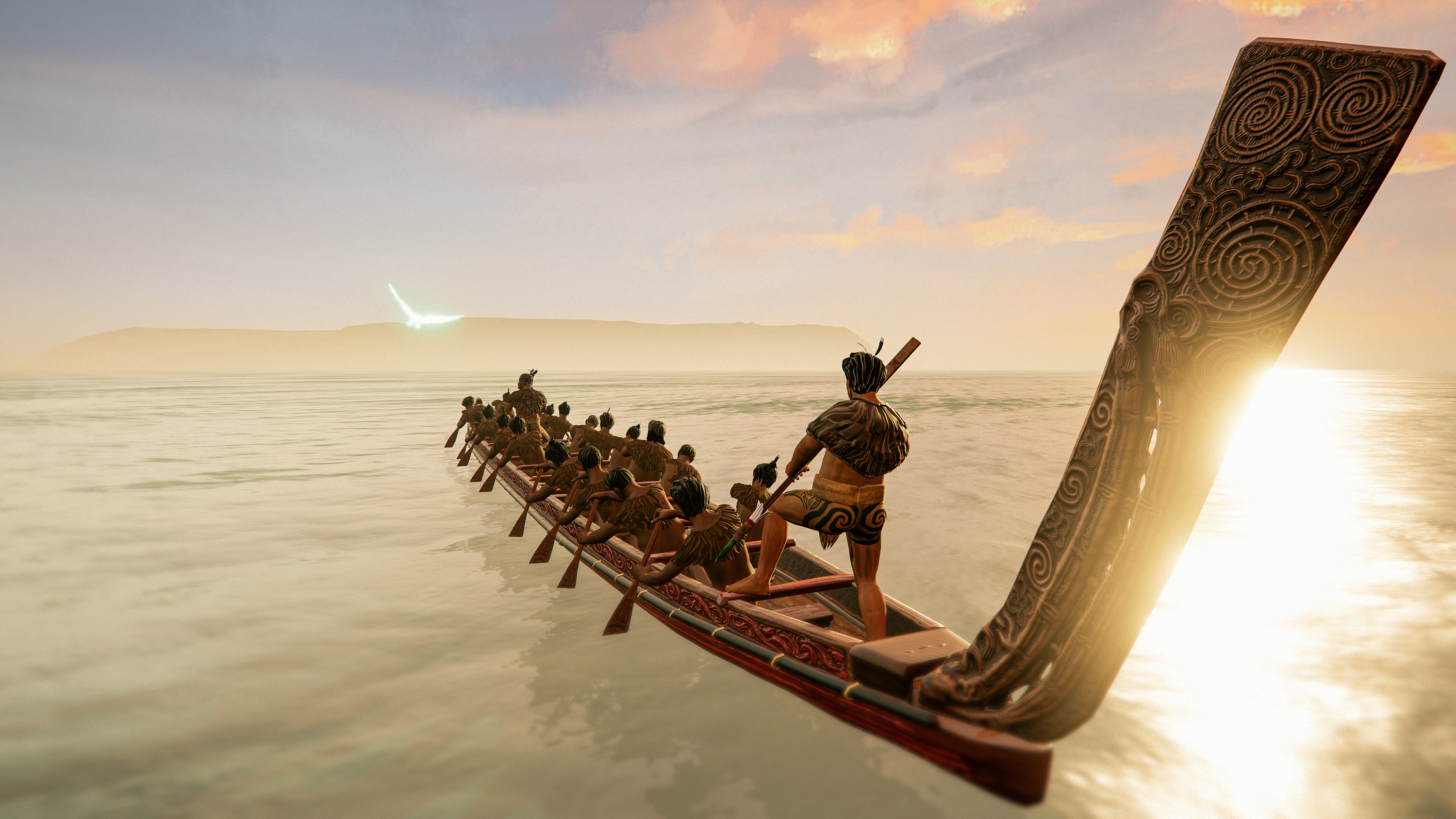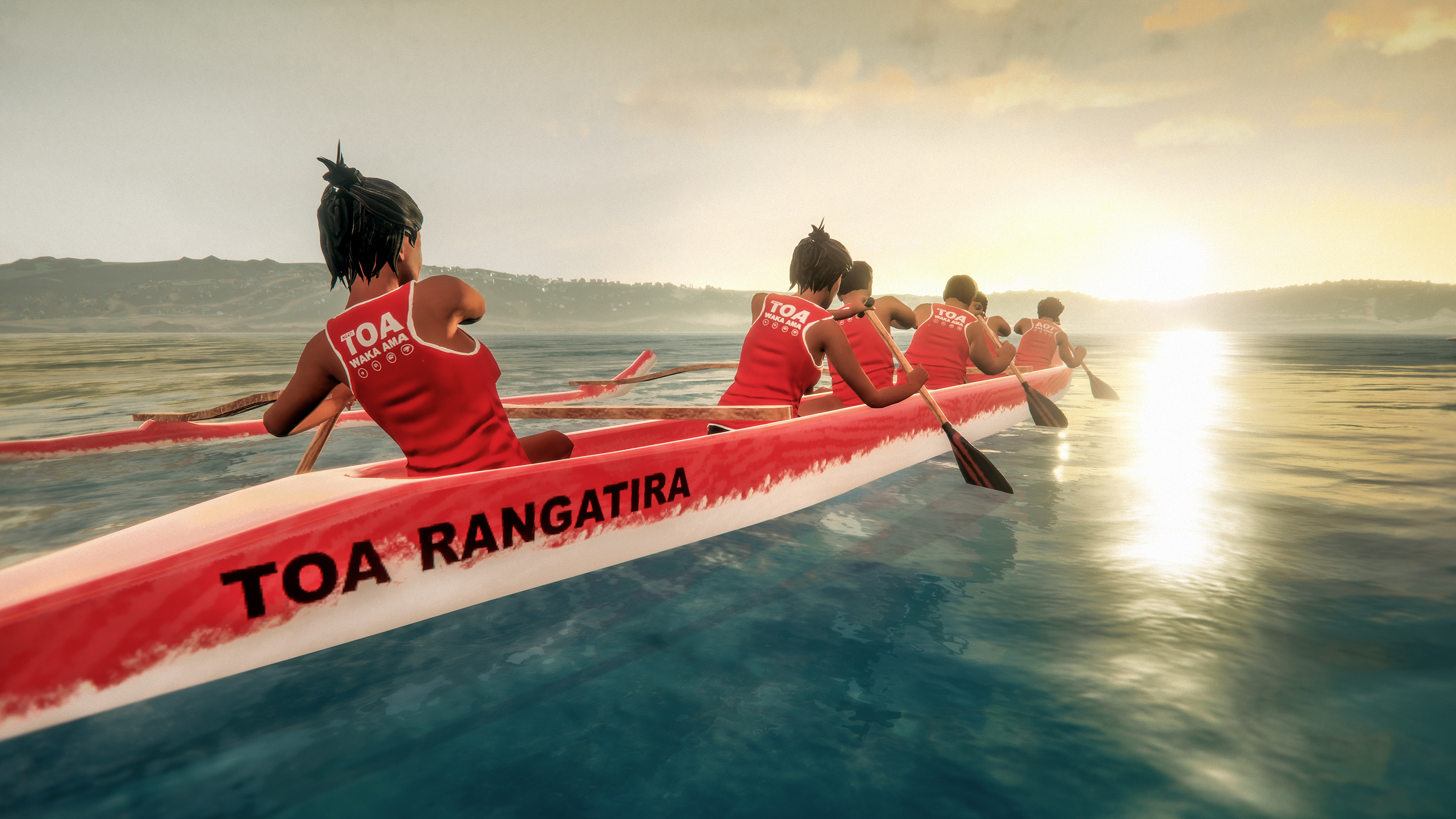In the VR film Whakakitenga, by Wiremu Grace, Ngāti Toa Rangatira, Atiawa ki Whakarongotai, Ngāti Porou; senior lecturer Dr Miriam Ross; and Associate Professor Paul Wolffram, the historical world of Ngāti Toa Rangatira warrior, poet, gardener, and carver Te Rangihaeata is brought to life.
“We are encouraging our new generations to connect to the landscape and our foundational stories through new media,” says alumnus Wiremu, who co-directed the film with Miriam and Paul from the University’s Film programme.
The collaboration between Ngāti Toa Rangatira and the University began when Miriam approached Te Rūnanga o Toa Rangatira to discuss a VR project about colonisation. The rūnanga suggested working with one of their iwi members, director Wiremu.
“Te Rangihaeata was a figure well known to Ngāti Toa for opposing colonisation,” says Wiremu.
The film shows Te Rangihaeata travelling by waka to Mana Island, seguing into an evening scene with Te Rangihaeata being visited by a kaitiaki (guardian spirit) taking the form of a white owl, and seeing a vision of the future of the land they care for being trampled on and split up.










